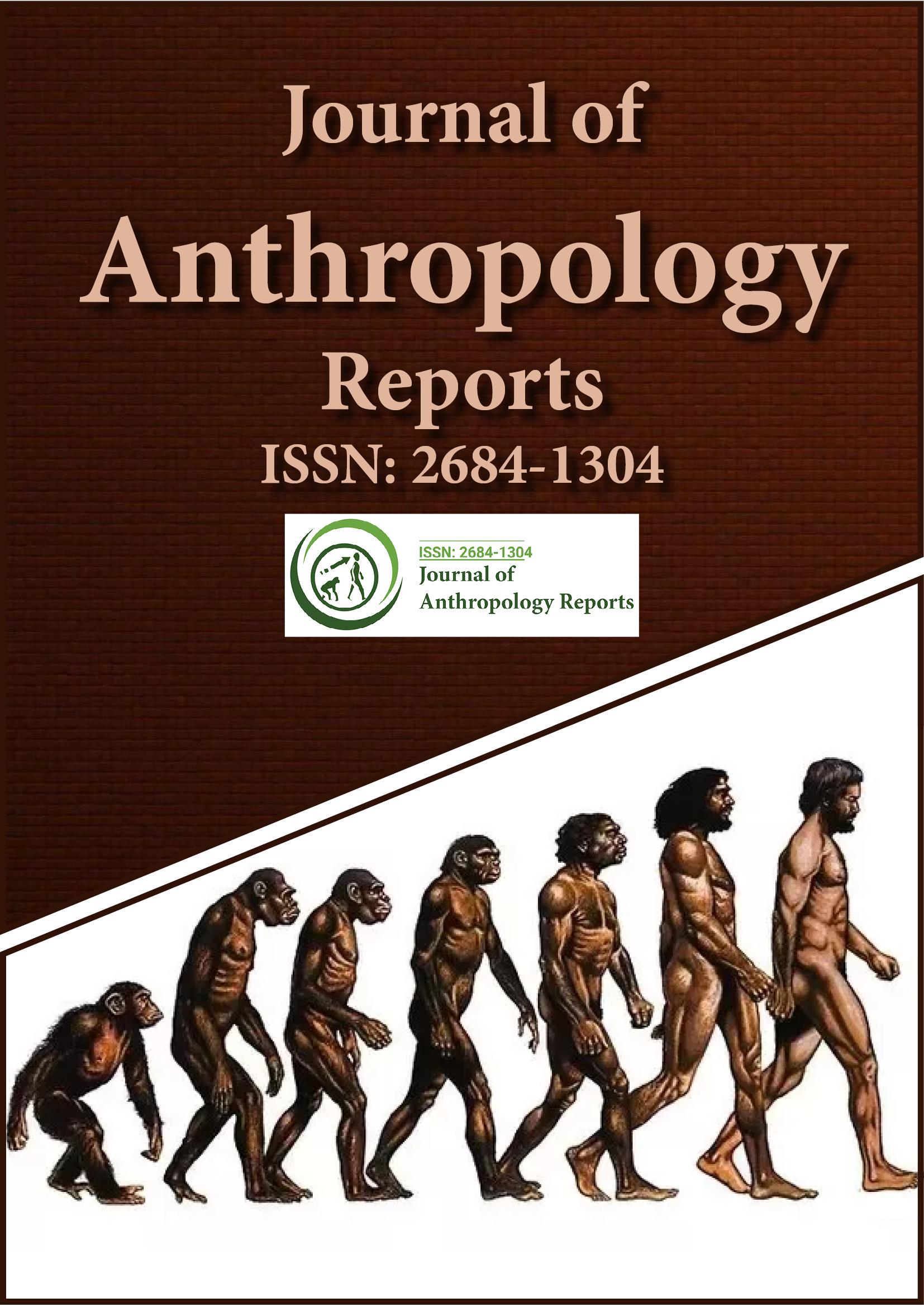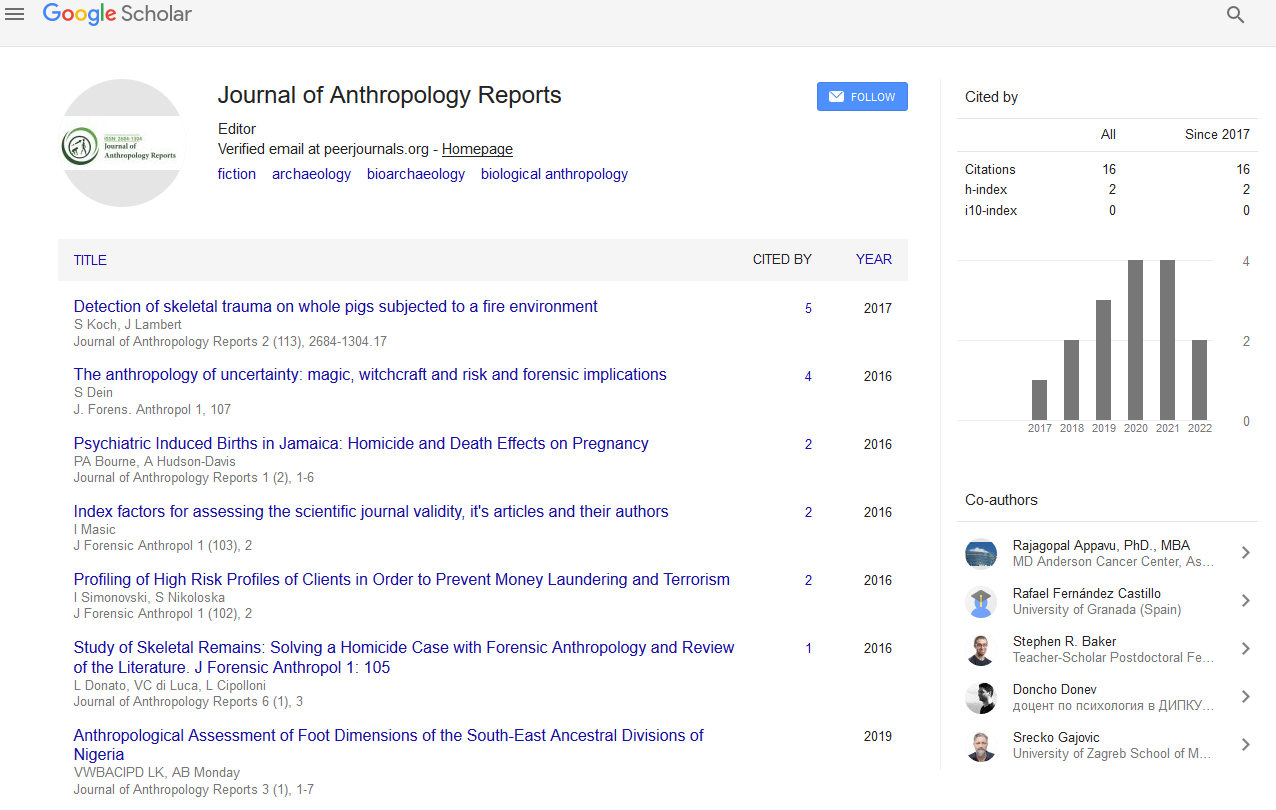Indexed In
- RefSeek
- Hamdard University
- EBSCO A-Z
Useful Links
Share This Page
Journal Flyer

Open Access Journals
- Agri and Aquaculture
- Biochemistry
- Bioinformatics & Systems Biology
- Business & Management
- Chemistry
- Clinical Sciences
- Engineering
- Food & Nutrition
- General Science
- Genetics & Molecular Biology
- Immunology & Microbiology
- Medical Sciences
- Neuroscience & Psychology
- Nursing & Health Care
- Pharmaceutical Sciences
Perspective - (2022) Volume 5, Issue 1
Applications and Challenges of Forensic Archeology
Xin Li*Received: 05-Jan-2022, Manuscript No. JFA-22-15517; Editor assigned: 07-Jan-2022, Pre QC No. JFA-22-15517; Reviewed: 20-Jan-2022, QC No. JFA-22-15517; Revised: 25-Jan-2022, Manuscript No. JFA-22-15517; Published: 31-Jan-2022, DOI: 10.35248/2684-1304.22.5.120
About the Study
Forensic archeology is a specialized application of archeology techniques for searching and retrieving evidence from crime scenes, often but not always, associated with buried human bodies. Forensic archeology is a field of forensic medicine that involves the use of archeological techniques in investigating crime scenes to identify evidence and reconstruct crime scenes usually murders. Forensic archaeologists are employed to excavate and retrieve bodies, belongings, weapons, etc. and dispose of irrelevant objects. The forensic archaeological process is very similar to the traditional archaeologist process in that it retrieves relics from the past.
Forensic archaeologists are used in cases that include buried human bodies and buried evidence related to crime. However, they can also be used to help resolve civil cases where evidence is buried. The main areas of forensic archeology are cemeteries and burial sites Forensic archaeologists frequently contact law enforcement agencies to help identify and excavate graveyards and burial sites, identify crime-related evidence, and reconstruct a series of events leading to the burial of victims. Most commonly, they investigate information about unresolved crimes, enforced disappearances, and found graves and burial sites. Objects related to crime. These can be both the victim’s personal belongings and the items buried by the criminal to hide their involvement in the crime. These are weapons, tools, and various personal belongings. Forensic surface disposal of bodies Medical archaeologists are usually asked to assist in the collection of evidence in the case of surface disposal of bodies. This includes covering the corpse with wooden benches, debris, building materials, and more.
Forensic archaeologists remove each layer to identify evidence and exclude items that are not related to the crime or victim. When studying surface disposal, forensic archaeologists often work with other forensic scientists, such as forensic botanists and entomologists. Mass Graves, these are usually commissioned by organizations such as the United Nations, but investigations focus on both recovering human bodies for identification and collecting evidence of guilty war crimes. Buried Evidence Related to Civil Litigation Forensic archaeologists may not need to excavate human bodies and look for buried evidence related to crimes such as murder. It may also be used to find evidence related to civil cases. The line of the buried fence.
Many people, including forensic experts, are confusing these. Part of the confusion stems from the fact that skills in these two areas overlap. In addition, in some countries, such as the United States, archeology is a sub-discipline of anthropology. Therefore, in the United States, people with anthropological qualifications often have some archaeological skills. In the UK, archeology is usually taught in a different faculty than anthropology and is considered an academic discipline in itself. Forensic anthropologists are body specialists.
Forensic archaeologists are experts in the fields of burial and other landscapes and excavations. Due to the different skills, it is important to maintain a distinction between forensic archeology and forensic anthropology. Each of these is a highly specialized subject and requires extensive training. This session aims to focus on current projects by individuals engaged in forensic research and casework. Case studies are of great benefit to those engaged in forensic fieldwork, as forensic archeology continues to grow as a discipline and is increasingly used by law enforcement officers. In addition, research is essential to strengthen the theoretical foundations of forensic archeology. This session will also introduce research projects that will be useful in future forensic research and the criminal justice system. Researchers have the opportunity to tackle areas that are still untouched by today’s practices. The purpose of this symposium is to bring together researchers and practitioners to create meaningful dialogue and promote collaboration.
Citation: Li X (2022) Applications and Challenges of Forensic Archeology. J Anthropology Rep. 5:120.
Copyright: & Copy; 2022 Li X. This is an open access article distributed under the terms of the Creative Commons Attribution License, which permits unrestricted use, distribution, and reproduction in any medium, provided the original author and source are credited.

